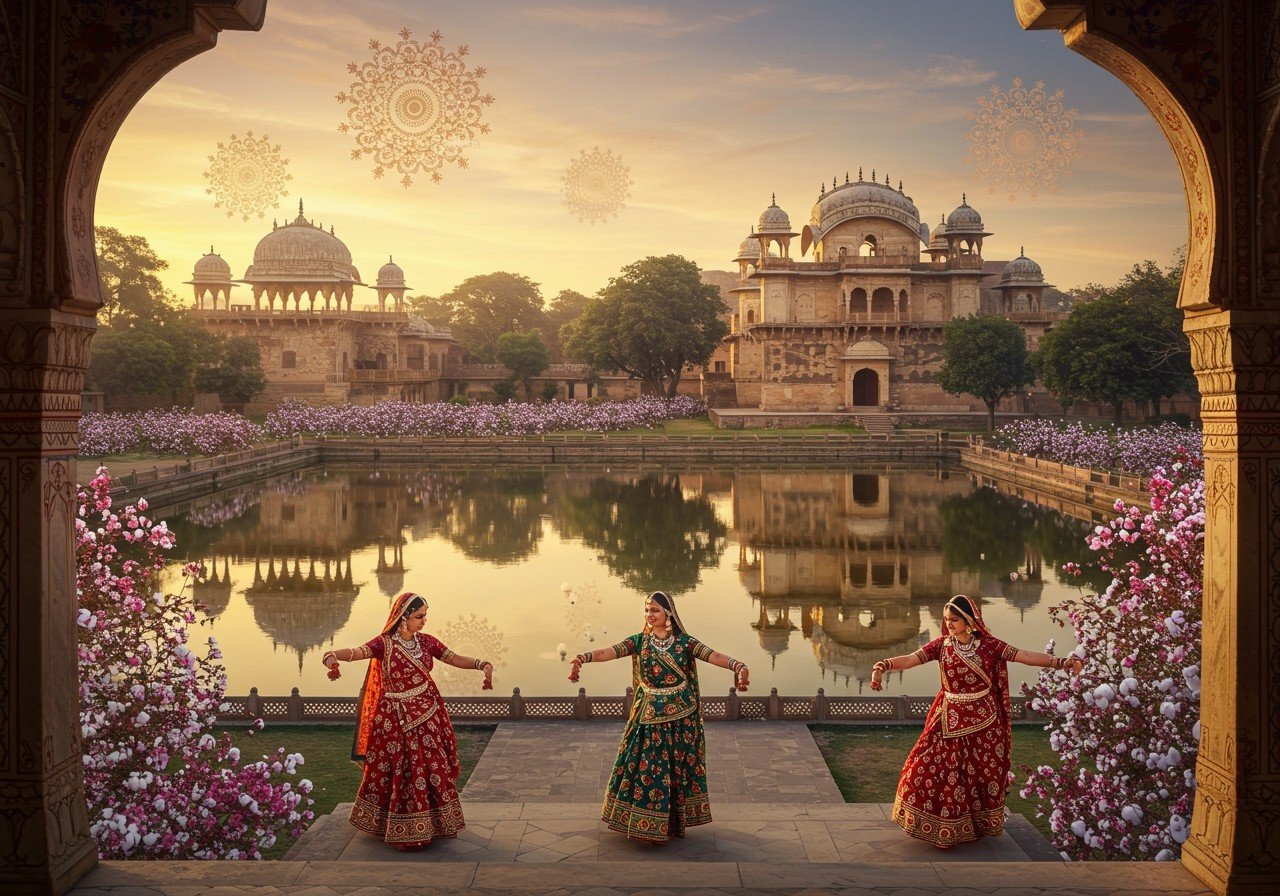
Embark on a captivating exploration of Malwa Culture, a remarkable tradition deeply rooted in history and instrumental in shaping the cultural landscape of central India. This journey delves into the significance of Malwa Culture’s enduring impact on contemporary Indian society, tracing its origins and celebrating its rich tapestry of traditions.
A Historical Overview of Malwa Culture
Malwa Culture’s origins can be traced back to the Chalcolithic period (c. 2500-1500 BCE). During the Gupta period (4th-6th centuries CE), Malwa flourished as a vital center of cultural and political activity. The Paramara dynasty, prominent rulers of the region, played a crucial role in nurturing art and literature. The subsequent Rajput rule contributed to the preservation and promotion of Malwa’s unique traditions. Over time, influences from the Mughal and Maratha empires seamlessly integrated into the existing cultural fabric. Even during the British colonial era, Malwa maintained its distinct identity and contributed significantly to the Indian independence movement.
Art and Architecture: A Testament to Malwa’s Creativity
Malwa boasts distinctive art forms and architectural styles. The intricate Malwa paintings are renowned for their unique themes, specialized techniques, and traditional materials. Iconic structures like the Ujjain Mahakaleshwar Temple and the Mandu fort stand as testaments to Malwa’s architectural brilliance. Jainism and Buddhism also left their mark on Malwa’s art and sculptures, while local artisans played a vital role in preserving traditional crafts. During the medieval period, Persian and Mughal architectural styles were incorporated into Malwa’s artistic vocabulary.
Cultural Practices and Traditions: A Vibrant Tapestry
Malwa’s cultural practices and traditions are a vibrant tapestry of customs and celebrations. Festivals like Diwali, Holi, and Malwa Utsav hold deep significance, showcasing the region’s festive spirit. Traditional attire and jewelry, unique to Malwa, are proudly worn and celebrated. The region’s culinary heritage is another source of pride, with dishes like Poha, Dal Bafla, and Bhutte Ka Kees tantalizing taste buds. Traditional music and dance forms like Raag Malwa and Bhavai are cherished expressions of artistic heritage. Folk tales and literature continue to shape Malwa’s cultural identity, while the forces of modernity influence the preservation and transformation of these time-honored traditions.
Malwa Culture Drawing: Intricate and Symbolic
Malwa drawings are characterized by their intricate details and symbolic representations. Traditional techniques and materials are employed in creating these artworks, often depicting religious icons, scenes from nature, and elements of daily life. These drawings play a significant role in festivals and rituals, adding a visual dimension to cultural expressions. Ongoing preservation efforts aim to promote Malwa drawing within contemporary art circles, ensuring its continued influence on modern Indian art.
Enduring Influence of Malwa Culture on Modern India
Malwa Culture’s influence on modern Indian society is undeniable. Its practices are evident in contemporary Indian festivals and rituals, demonstrating the enduring relevance of these traditions. Malwa’s art and architecture continue to inspire modern Indian design and aesthetics. The contributions of Malwa literature and folklore enrich contemporary Indian literature, adding depth and diversity to the nation’s literary landscape. While preservation efforts face challenges, the distinct cultural identity of Malwa continues to shape regional and national consciousness.
Poojn.in: Your Gateway to Malwa’s Cultural Treasures
Poojn.in, India’s leading online store for cultural goods and services, offers a wide array of products that resonate with Malwa’s rich heritage. Discover authentic puja items, traditional attire, handcrafted jewelry, and more, all carefully curated to reflect the essence of Malwa culture.
- Puja Items: Find everything you need for traditional Malwa ceremonies, from Bel malas to Tulsi malas, ensuring authenticity and reverence in your rituals.
- Traditional Attire: Explore a collection of clothing and accessories that reflect the unique style and elegance of Malwa’s traditional attire. Find vibrant fabrics, intricate embroidery, and exquisite jewelry that capture the region’s cultural aesthetic. Discover pieces that connect you to the heritage of Malwa and allow you to express your cultural pride.
- Home Decor: Bring the essence of Malwa into your home with handcrafted décor items. From wall hangings inspired by traditional Malwa art to intricately designed pottery, these pieces add a touch of cultural richness to your living space. Support local artisans and celebrate the beauty of Malwa craftsmanship.
- Spiritual Guidance: Connect with spiritual guides and resources that offer insights into Malwa’s spiritual traditions. Explore articles, books, and online resources that delve into the region’s philosophical and religious heritage. Deepen your understanding of Malwa’s spiritual landscape and connect with its profound wisdom.
Visit Poojn.in today to embark on a cultural journey and discover the treasures of Malwa.
FAQs: Delving Deeper into Malwa Culture
What defines Malwa culture? Malwa culture is characterized by a unique blend of historical influences, artistic expressions, religious practices, and vibrant traditions that have shaped its distinct identity.
What is the historical significance of Malwa? Malwa holds historical importance as a prominent center of power, culture, and trade during various periods in Indian history, influencing the development of the region and beyond.
How can I experience Malwa culture today? You can experience Malwa culture through exploring historical sites, attending cultural festivals, engaging with traditional art forms, and connecting with online resources like poojn.in.
Conclusion
Malwa culture stands as a testament to India’s rich and diverse heritage. Its enduring influence is a celebration of tradition, resilience, and artistic expression. By exploring and embracing this vibrant culture, we enrich our understanding of India’s past and contribute to its vibrant present.


